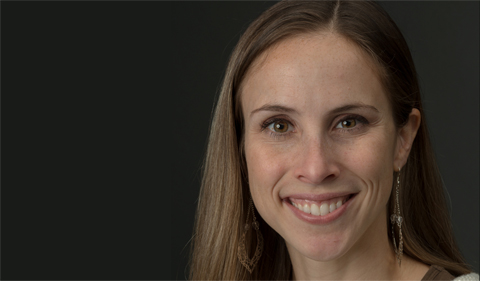
Dr. Jana Houser
The Geological Sciences Colloquium Series presents Dr. Jana Houser on “Rapid-Scan Radar Observations of Tornadoes: What We Have Learned About Tornado Structure and Evolution” on Friday, Jan. 20, from 3:05 to 4:00 p.m. in Clippinger 205.
Houser is Assistant Professor of Geography at Ohio University, where she conducts research and teaches courses on Physical Geography, Synoptic Meteorology, and Mesoscale Meteorology.
Abstract: Tornadoes are fascinating atmospheric phenomena, known for their destructive violence. Yet, at the same time, they captivate viewers with their grace and beauty. Since the dawn of the field of meteorology, these vortices have been the subject of intense study. For over 50 years, radar platforms have provided the fundamental observations required for improving understanding of how tornadoes are structured, how they form, and how they evolve. Yet, for the majority of this interim, radars have not been able to sample tornadoes on a sufficiently small temporal scale to observe adequately the rapidly changing processes that occur within them. Over the past 5 years, new advances in radar technology have allowed these instruments to achieve scan rates that are 10-15 times faster than conventional radars; what takes traditional weather service radars 4.5 minutes to accomplish, a rDr. JHapid-scan radar can accomplish in 20 seconds. Since tornadoes evolve at time scales on the order of 10 seconds, it is of vital importance to acquire observations at a rate comparable to this. Thus, rapid-scan radars have shed new light on the old questions of how do tornadoes form, how are they structured, and how do they evolve?
In this talk, Dr. Houser will discuss new insight learned from rapid-scan observations regarding: 1) how the rotation associated with a tornado evolves in a spatial context over rapid time scales, addressing the question of ‘do tornadoes form from the top down?’; 2) how (spatially) the rotation associated with a tornado weakens as the tornado dissipates; 3) the rapid change in the structure of tornado debris and what this can tell us about the tornado; 4) the properties and possible formation mechanisms of a rare horizontal vortex observed wrapping into a large, violent tornado.
Upcoming Colloquia
Adam Summers of the University of Washington on “From Finding Nemo to finding patents – the natural history of the sea as inspiration” on Feb. 10 at 4:00 p.m. in the Baker University Center Theatre.
David Kidder of Ohio University on “Changing influences on chert formation through the Paleozoic and beyond” on Feb. 17 at 3:05 pm in Clippinger 205.
David Jefferey of Marietta College on Mar. 24 at 3:05 p.m. in Clippinger 205.
Cathy Busby of the University of California at Davis on “Anatomy of a long-lived oceanic arc: Synthesis of three IODP expeditions in the Izu-Bonin-Marianas Arc” on Mar. 31 at 3:05 p.m. in Clippinger 205.



















Comments